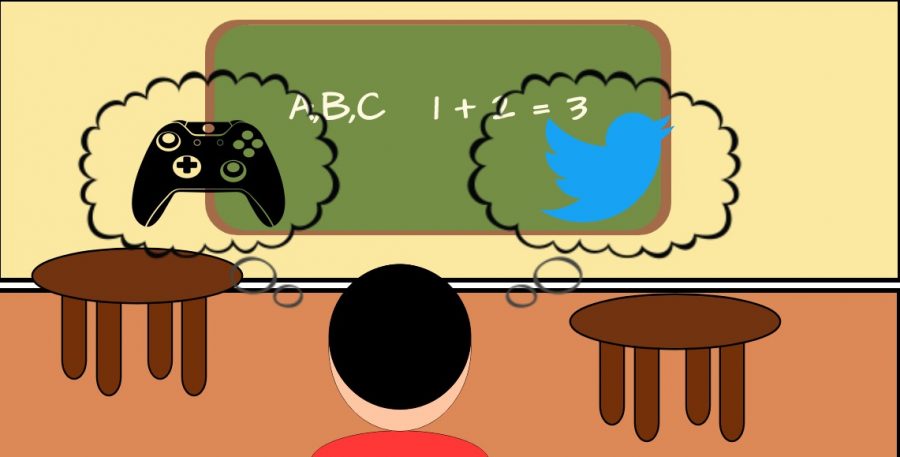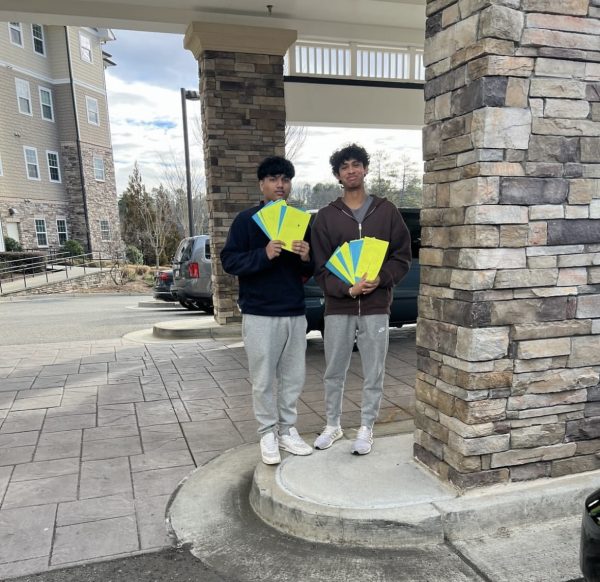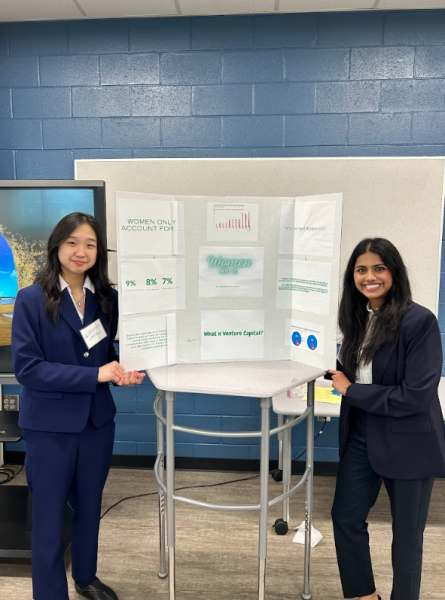Technology’s impact on students
Technology has become increasingly prevalent in the classroom, so it becomes important to evaluate its affects on students.
Students often feel distracted in class with technology at their fingertips.
December 14, 2017
Technology is an immense part of a student’s life. 15-18-year-olds spend an average of just under 8 hours a day on their smartphones according to a study by the Kaiser Family Foundation. The education system has shifted to the students and is now becoming more technologically oriented.
Computers are a handy tool; the Internet allows students to gather any knowledge they desire at their fingertips, computer software lets student present information, and collaborative interfaces such as Google Drive let students work together outside of the classroom. Instructors can wield technology as a powerful weapon, but this weapon is a double-edged sword.
Technology is a big distraction to teenagers; students check their smartphones an average of 11.43 times a class for non-educational purposes, as revealed by a study published in the Journal of Media Education. Checking your phone 11 times a level might not seem like a big problem, but teachers note that smartphones are diverting students from the class; one teacher notes “Smartphone usage greatly distracts students greatly; it’s one of the biggest distractions in the classroom.” It is such a big distraction that she took matters into her own hands “To make sure that students stay on task I ask students to put their phones in a phone pouch at the beginning of class.” Even students admit that technology is distracting them from the classroom; Jake Brustein, a South Forsyth junior, says “I feel drawn to my phone, even if I don’t want to use it and want to pay attention I end up using it a few times every class.”
Some may view that technology distracting students from the classroom isn’t essential, but smartphones might not only distract students, but they might even hurt their learning abilities, such as critical thinking. A study by UCLA suggests that technology might be responsible for a decline of critical thinking and analysis among students. Mark Curry, a junior, remarks that “Sometimes I just can’t pay attention in class; I want to pay attention, but I just can’t as long as my phone is right next to me.”
The loss of critical thinking represents more than the failure of the education system, but it also signifies a change in American culture with us straying away from its romantic ideals and love of innovation, which are heavily correlated with critical thinking. It may seem like hyperbole to say that students checking their phones in class somehow indicates the loss of cultural identity. But we are at a time when our society is changing; people are becoming more disingenuous to their community, and our lifestyle is growing faster and shallower. It is hard to dismiss technology as a significant factor in these changes.
Even with its detriments, technology and the transition to visual mediums should still be utilized as a valuable tool in the classroom. The same study from UCLA added that technology significantly increases the amount of information that students can process. Patricia Greenfield, a researcher in the study, concludes, when referring to the balance of technology and traditional educational tools, that “No one medium is good for everything, if we want to develop a variety of skills, we need a balanced media diet. Each medium has costs and benefits regarding what skills each develops.”
There is no way that we can remove technology from the classroom; it is too entwined in the way we learn, and we shouldn’t dismiss technology as it has shown itself as a valuable educational tool. So the solution is a compromise. Technology is a tool that must be utilized, but it also can be easily abused. How to efficiently curb harmful technology usage while also not losing any of its benefits will remain a challenge for instructors.










